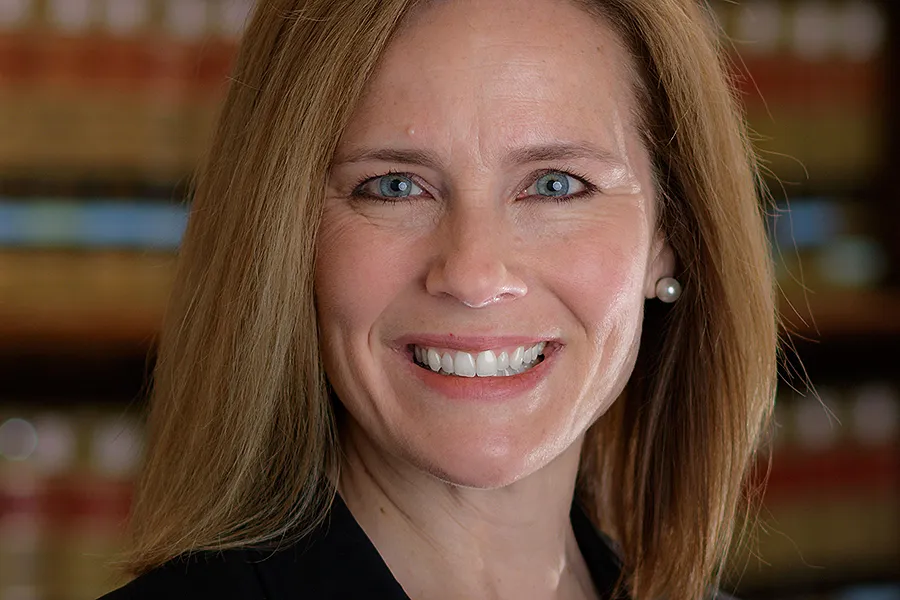
Washington D.C., Jul 1, 2018 / 04:04 pm (CNA/EWTN News).- When Maggie* was in high school, she stayed after class to talk to ask a teacher what to do about a very personal concern she felt her physician was not taking seriously.
What she learned led to the discovery of a brain tumor, and treatment for the growth, which had been affecting the teen for years. The tools she needed to find and treat this growth came from an awareness of her fertility and natural cycles.
“It wasn’t so much that I was trying to avoid pregnancy or get pregnant – it’s that there was something legitimately wrong with my body,” Maggie told CNA.
By the time she was in her late teens, Maggie had noticed that her cycles had never regulated, and had no idea what that meant except that it wasn’t normal. While for the first years after a young woman begins to menstruate her cycles are of varying length and heaviness, they typically regulate within a few years. But several years after her own cycles began, Maggie was concerned that they never had settled into a normal pattern – in fact, she sometimes would have as few as one cycle a year. In addition, she also faced rounds of headaches.
One day, Maggie approached her college-level biology teacher, who also happened to be a practicing Catholic, looking for an explanation for her concerns and asking what to do. The teacher told her to ask her pediatrician, but also put her in touch with her church’s fertility instructor to see what could be done.
Maggie said her pediatrician immediately assumed that she was pregnant: an impossibility, because she was not sexually active. When the pregnancy tests came back negative, the doctor responded, “‘I don’t know what your problem is’ and brushed me off,” she recalled.
Meanwhile, the local parish’s natural family planning (NFP) instructor saw the teen’s distress and put her in touch with a Catholic fertility physician who could teach Maggie how to observe and chart the signs of her fertility.
Understanding Fertility
“A sign of health in a woman is a normal, regular cycle,” Dr. Lorna Cvetkovich, a gynecologist and obstetrician at Tepeyac Family Center in Fairfax, Va., explains. “We know what a normal cycle looks like,” she continued, “so at any time the parameters fall outside of those, then that’s a clue that maybe they’re not ovulating, they may have a luteal phase defect, they may have fibroids. It can show you all sorts of things.”
For women whose cycles fall within a normal range, normal bodily processes present themselves in a predictable pattern.
In the first part of a woman’s cycle, called the follicular phase, hormonal signals from the pituitary gland trigger the follicles (egg-containing structures within the ovaries) to prepare an egg for ovulation and to secrete estrogen into the woman’s body. This rise in estrogen levels triggers changes in the kind of fluid the cervix secretes, as well as thickening the uterine lining, making them more able to support the conception process.
After ovulation a woman’s body secretes progesterone, which causes a sharp increase in a woman’s basal, or resting, body temperature, as well as a preparation of the uterine lining for possible implantation. If a pregnancy occurs, the basal body temperature and hormone levels may continue to rise, whereas if pregnancy does not happen, the resulting dip in hormones triggers a drop in temperature, menstruation, and the beginning of a new cycle.
In a healthy woman who is not pregnant, this cycle will repeat every 21-35 days.
These changes can be observed by any woman, and can be used by married couples as a valid method to achieve or delay pregnancy, according to the teaching of the Catholic Church, which teaches that it is immoral to disrupt this natural cycle with the use of contraceptive pills, implants, barrier methods, or by having incomplete intercourse. Using these observations to help in the discernment of family size is known as natural family planning.
However, the same observations and data – commonly collected into charts for easier analysis – can be used to help diagnose gynecological issues such as ovarian cysts and growths in the uterus, called fibroids, as well as hormone deficiencies and other abnormalities affecting bodily functions. The information can also be essential in pinpointing issues surrounding pregnancy, such as the exact date of conception, infertility, and miscarriages.
This information is such a valuable insight into a patients health and symptoms – and an invaluable tool for doctors practicing reproductive medicine. “I just think it’s invaluable, and I don’t really know how people practice [gynecology] without having the charting,” said Cvetkovich. “There’s just so many uses, and it adds so much to your evaluation of the patient.”
Cycles and Diagnosis
Disorders in other bodily systems – such as the endocrine system – can manifest in a woman’s menstrual cycle and her chart. “Thyroid plays a role in almost every function of the body, so it may show up as a sign in the cycle,” explained Cvetkovich.
For Christine, charting her bodily signs helped her to catch an issue with her thyroid that might otherwise have been missed. After charting for four years, she started noticing that some months there was no ovulation that could be detected by temperature or with chemical tests for the hormones that trigger ovulation.
“I had what looked like a really long cycle, and then eventually, what to the uninformed observer would look to be a light period. But because I knew I hadn’t peaked, I was able to identify it as estrogen breakthrough bleeding and not a real cycle,” she explained.
“It seemed like my body was trying to ovulate, and not really getting there.”
She approached her doctor, explaining she was not ovulating and that she would like to find the cause for something that was out of the ordinary. The doctor then ordered comprehensive blood tests, and found that some of her thyroid-stimulating hormone levels were elevated beyond normal – in fact, her levels were twice as high s they had been a year ago.
After receiving treatment, her cycles returned to their normal pattern.
“I didn’t have a lot of signs or symptoms of hypothyroidism, aside from missing ovulation,” Christine noted, saying she wouldn’t have picked up on the disorder had she not been charting. “ I wouldn’t have realized there was an issue,” Christine she added, reflecting on the fact that she probably would not have even received the treatment she needed.
“Whenever I’m sharing my experience with NFP with somebody, I’m always quick to point out not only all of the standard benefits, but that it enabled me to know my body and know there’s a problem that so many people wouldn’t be aware of.”
How Fertility Awareness Helped to Find a Tumor
After a local NFP instructor put Maggie in touch with physicians familiar with fertility awareness, she became more aware of what was going on in her own body. She learned to observe her basal body temperature and cervical fluid signs – and noticed that while sometimes she had a more typical menstrual cycle and her chart showed the usual peaks and dips of a healthy young woman, at other times her cycle was irregular and her temperature was more elevated.
Even though she was not sexually active, “my body was acting like it was pregnant,” Maggie said. The doctors at the Catholic fertility clinic sent Maggie out for blood work, which showed a high level of prolactin – a hormone present during pregnancy and breastfeeding. She took this information back to her pediatrician, and then to an endocrinologist, who ordered an MRI scan of her brain.
“There was a tumor pressing into my pituitary, pressing into my frontal cortex,” Maggie explained.
“When I first heard the word ‘tumor’ I freaked out,” she related, but thankfully, “it wasn’t cancerous,” but a benign growth which explained both her irregular cycles and some of her headaches.
Maggie received the treatment she needed to shrink the tumor, and told CNA that “things are pretty much normal now.” While the tumor is still there – “it’ll never really go away, unless I get surgery,” she related; “what’s happened at this point is that it’s checked.”
While since receiving treatment she has no need to monitor as rigorously all of her signs and symptoms, knowledge of her fertility and its signs has given Maggie tools she can use use if the tumor starts to grow again.
“I have this, and I know these are indicators to know [if] something is wrong with my prolactin.”
Fertility – ‘A Public Health Issue’
Cvetkovich suggested this level of awareness can be useful for any woman looking to take care of their health.
“I think that anytime you put someone more in tune with your body, they’re just going to know that things are wrong earlier. I think that’s what it’s all about, knowing what’s normal for you, and being in tune with it.”
She commented that many of her fellow physicians, as well as the general public, have grown accustomed to relying on hormonal contraceptives to address disorders, a practice she said “makes people very distant from their bodies and from their cycles.”
“We’ve lost the idea that having a normal monthly cycle is health – that’s normal. Being fertile is normal. I think that’s where NFP brings us back to, really: to reality.”
Maggie agrees, saying that some of her initial struggle in receiving treatment was a result of people “missing the point that fertility isn’t sort of an accessory to being a human woman – it’s an integral part of how our bodies work.” Awareness of how women’s bodies work, and how to tell when they’re not working correctly, is important for everyone.
“It’s a public health issue.”
*Name has been changed to protect privacy.
This article was originally published July 31, 2015.
 […]
[…]






